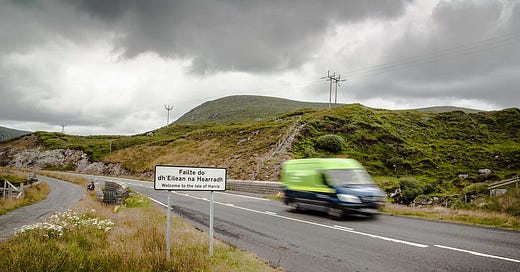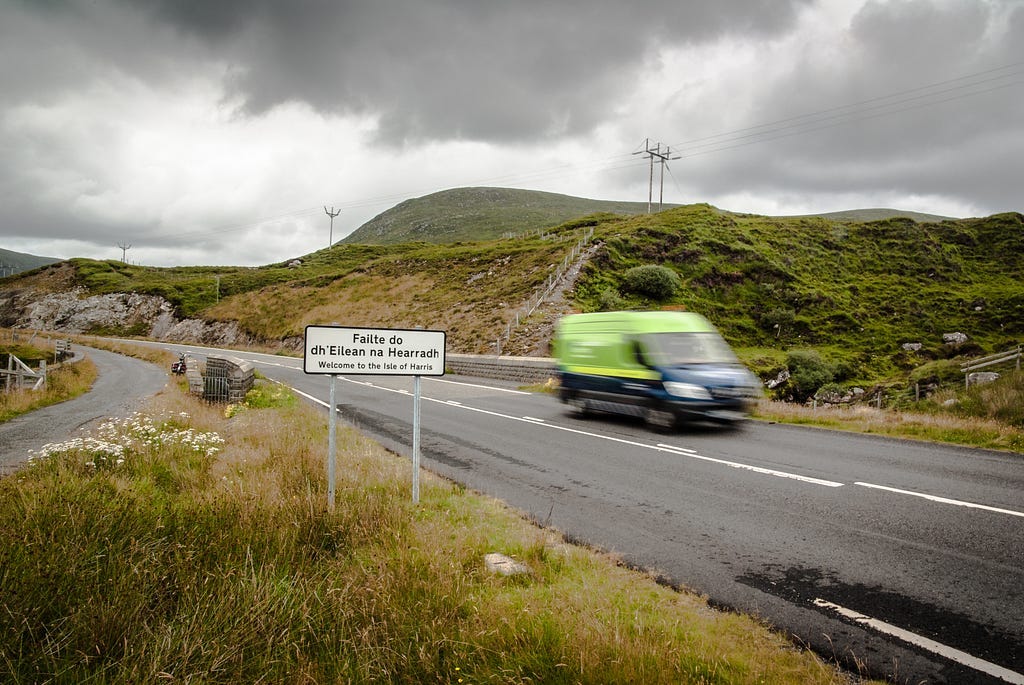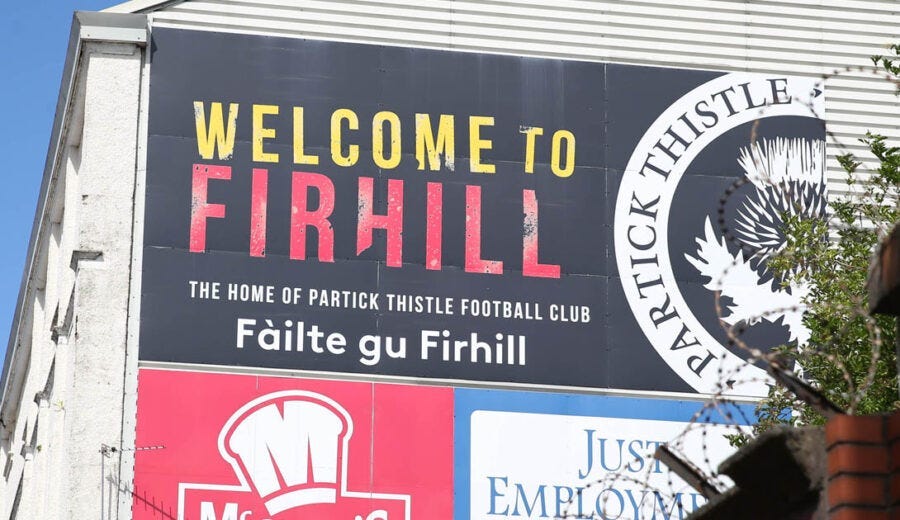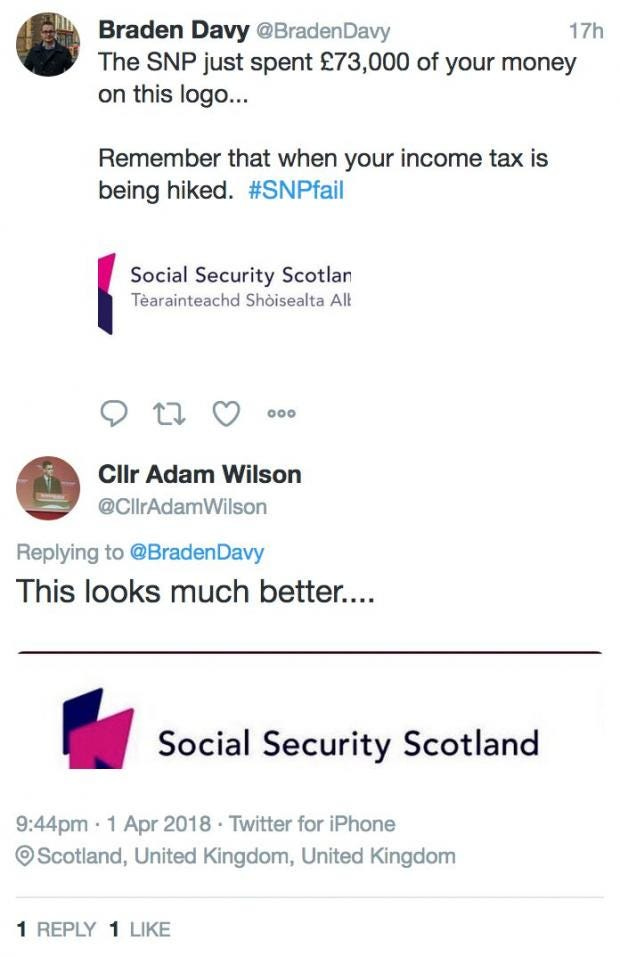Scottish Gaelic is struggling — and politics is making revival harder
Scottish Gaelic is struggling — and politics is making revival harder
Since the day fifth-century Irish settlers founded a new kingdom in Scotland’s island-ridden south-west, the Gaelic language has been spoken across the country. It started as a mere dialect of Irish, but as Scotland naturally grew distant from Ireland’s administrative and linguistic power, Scottish Gaelic — Gàidhlig — became its own language. Celtic languages like Scottish Gaelic, Irish, Manx, Welsh, and Breton have survived many shortcomings and revitalizations. They have held out, from the days of Viking and Sassenach invasions to the height of the Victorian-era British Empire.
However, since the turn of the twentieth century, some of these tongues have lost the places they once held in their respective societies. In the 1970s, Manx temporarily went extinct after its last native speaker on the Isle of Man died; it is only after intense revival efforts that the language has been resurrected through second-language learners. From zero speakers in 1974, there are now around 2,300 speakers according to last year’s island census.
This month, I came back from a week-long holiday to Pitlochry (Bhaile Chloichridh), a quaint town at the start of the Highlands. Now, I’ve always been fascinated in language and in linguistics — ‘how do babies pick up languages when their household is bilingual?’ and those sorts of questions perplex me, but also make me think intensely. And the question — part political, part social — of where Gàidhlig stands in communities like this has been a pretty big one of those; in the local Co-op, all signage is bilingual. From the welcome sign on the glass to the board telling you how nice the wine is, the Gaelic sits atop the English in white text.
When you approach, the lettering on the glass first states fàilte dha Co-op Bhaile Chloichridh, with the translation of ‘welcome to Pitlochry’s Co-op’ printed below. For a first-time tourist, this would quite obviously give you a false sense that Gaelic is spoken there. In the rural areas where I stayed, there were also some road and cottage names that were in the language. But within the town center, only the Co-op and the state-owned Pitlochry train station display Gaelic. No homes, no other shops. When I asked Andrzej, an employee at the national tourist board’s Pitlochry building, about the prevalence of Gàidhlig in Pitlochry, the answer that came back was ‘I’m pretty sure there are no native speakers here, but through Duolingo or otherwise, there are a few learners’.
The data from the 2011 census shows this to be accurate. In the civil parish of Moulin — where Pitlochry is included — out of 3,153 people there were thirty-two with full understanding, twenty-five with only listening skills, and roughly thirty-four with skills in only writing, reading, or speaking. Many of these speakers, given the statistical area, will not even reside in Pitlochry. In the presence of English businesses, English newcomers, and international tourists, a dying tongue in a town like this is only going to continue falling into obscurity.
Alas, in Pitlochry, here we come across a sociopolitical barrier where there is education and there is a semblance of bilingualism, but Gàidhlig continues to be nearly extinct. It’s not just in this town that this story of a struggling tongue exists, but across the vast amount of Scotland. And, additionally, it’s not just about Gaelic becoming a ‘boring’ or ‘old-people’ language; in fact, from that census, the only age group where the number of speakers went up — albeit by 0.1% — was those under 20. The barrier is bureaucracy, politicians, and partisanship.
The Firhill football farce
On August 6, the Scottish Championship football team Partick Thistle announced an introduction of Gaelic signage outside and inside its venue. On an external welcome billboard, in significantly smaller lettering than the yellow and red ‘Welcome to Firhill’ above it, the Gaelic reads ‘Fàilte gu Firhill’. A seemingly innocuous gesture to the Gaelic revival project, supporters of the Scottish Conservative party were among those completely enraged on Twitter and elsewhere.
The signage was paid for by the Glasgow City Council in association with the Bòrd na Gàidhlig language committee.
‘The main objective of the Partick Thistle Gaelic Initiative is ultimately to increase the number of Gaelic learners, users, and speakers through interacting within not only our own fan base but also in the local community.’
A man with a Winston Churchill profile picture stated below Firhill’s official Twitter post, ‘Paid for by us, the taxpayer. All sympathy for your club has evaporated. I will never watch another game at Firhill’, prompting a barrage of sarcastic replies. Another person says, ‘What about Klingon? Makes as much sense after all.’ Under Gaelic comments to Partick Thistle's post, the language is then ridiculed by English speakers who compare it to a ‘bad Scrabble hand’.
For those who pride themselves on protecting true and native British culture, the ridicule of an indigenous language while asking why more-spoken foreign languages like Polish aren’t promoted is incredibly ironic. When a language is merely spoken to a certain degree it is not automatically entitled to state-sponsored furtherance; that should be commonsensical.
General abuse towards a harmless cause like this is indicative of the struggle Gàidhlig and minority cultures face to become accepted and historically recognized. It also puts on full show the cultural entitlement the majority-English people feel they have.
The Leveson Inquiry (and a game of bingo)
Bombshell reports were made in 2005 that since at least the early 90s, the News International corporation owned by Rupert Murdoch had been hacking the phones of celebrities, royals, and victims of crime to garner headline-creating information for their papers.
Phone hacking and police bribery were rampant in the work of those at the News of the World tabloid; at first, it was only found that they had infiltrated the devices of celebrities and royals. However, in 2011, much more would come out. An investigation by The Guardian found that the paper had hired a private investigator to hack into the voicemails of two people; the first was Milly Dowler, a girl who had disappeared and was later found to have been murdered by a serial killer. The second was the mother of Sarah Payne, a girl murdered by a pedophile.
Glenn Mulcaire — the private investigator — also digitally had in his possession the phone numbers of several soldiers killed in Iraq and Afghanistan; News of the World was also involved in:
Hacking or eavesdropping on the mobile devices of survivors, rescuers and victims’ relatives after the July 7, 2005 bombing
Accessing the bank of Prime Minister Gordon Brown and the private medical records of his son, a sufferer of cystic fibrosis — a The Sun journalist said that they would reveal the diagnosis if he did not announce it first
Hacking the phone of renowned TV host Paul O’Grady following his non-fatal heart attack
Hacking the phone of a cousin of Jean Charles de Menezes, the man killed by the Met Police after being mistakenly identified as one of the suspects in the July 21 attempted bombing (a follow-up of the successful 7/7 attack)
As a result of this, a tribunal of inquiry was set up by Prime Minister David Cameron — headed by Lord Justice Leveson — to explore and expose the ethics of the British press following this huge scandal. Over two years, the judiciary spoke to 46 key participants regarding the News International issue itself, and 337 others in regards to the general ethics and behavior of the whole British press.
One of the witness statements made was in regard to the attitude of journalists toward Scottish Gaelic. They categorize the attempts to disparage the language into disinformation, falsifying history, exaggeration, ‘catchphrases’, fault-finding, personal abuse, and anti-Gaelic columnists.
One newspaper listed a project to implement bilingual road signs as costing £26 million — wrongly using the cost of the entire Gaelic budget — while in actual fact the plan was an insignificant £620,000. Claims made about the historical prevalence of Gàidhlig like ‘Gaelic is not the first language of Scotland, it never was and never will be’ are also incorrect but seem to be purposefully used to cause controversy and further anti-Gaelic rhetoric. It has been proven to be the first popularly-spoken and widely-recorded language of Scotland. Other statements on the language ‘never exist[ing] below the Forth-Clyde line’ are incorrect since Gaelic had indeed spread into those two areas of the south of Scotland before the language started diminishing.
These attacks against speakers of Gaelic aren’t nearly as novel as journalists and campaigners alike think they are, though. In the 1400s and 1500s, Scots were recorded as referring to the Highlands — where more people speak the language — as the ‘other’ part of Scotland. ‘Those devils, in rags and tatters’, proclaims one poet.
‘Highlandmen are proud, obstinate, boastful, treacherous, violent, fickle, cowardly, and ragged; they speak very loudly in a barbarous language that nobody can understand, and there are altogether too many of them’
Anti-Gaelic rhetoric existed in the days of yore, before Scottish political nationalists and trivially-infuriating billboards. But, in today’s world, it is evolving into a far-gone comedic trope than a serious and concerning belittling of an entire culture. One academic knew that his piece on language revitalization wouldn’t change the minds of any anti-Gaelic writers, so he decided to play around and create bingo cards with the most common stereotypical phrases.
Amongst the bingo-blobbing options are phrases from ‘on life support’ and declining’ to ‘distracting on road signs’ and ‘forced down our throats’, all of which are extremely common things to hear as a Gàidhlig speaker.
Thatcher.
If Margaret Thatcher hadn’t already upset one Celtic nation — Wales — enough, she wouldn’t stop there. From even before the campaign that brought her to office, she faced challenges with Scotland and its desire for more autonomy and devolution. The 1979 general election was called thanks to a vote of no confidence brought by her toward the government of Labour’s James Callaghan; one of the reasons the famous VONC came to exist was a referendum on Scottish devolution which initially succeeded, but the laid-out turnout quota was not met. The SNP and Plaid Cymru — who wanted Labour to push ahead and make the Assembly anyway — joined Thatcher’s Conservatives, booting Callaghan’s government out by one vote. In the impending election, Labour and the Conservatives gained votes and seats, but the SNP dived.
In a Scotland-only assembly, Gaelic language revitalization would have been a higher priority than in the UK-wide legislature. For another twenty years — until a second (and far more successful) referendum by Tony Blair brought a new Scottish Government and Parliament — the Gaelic community would not have ample representation, thanks to Margaret Thatcher and her ministers.
Thatcher and the Gaels did not have many direct and publicized clashes during her 1979–1990 term other than that, except for one documented clash over television. The then-Scottish Secretary Malcolm Rifkind had lobbied and asked for additional funding for Gaelic television, to increase broadcasting from a puny 100 hours to a meager 300 hours. The Welsh-language channel S4C at the time had 1,300 hours of programming supported by the Government, but Thatcher and Nigel Lawson — the Chancellor — refused the £8 million expansion as to ‘not inflict more onto an unwilling audience’. Does that phrasing sound familiar?
Advisors to Thatcher found and approved the funding eventually, and today BBC Alba sees between 500,000 and 1 million viewers a week, which is quite a sizeable audience for a dedicated channel like itself. But as actions relating to the ‘Iron Lady’ always do, her legacy of anti-Gaelic comments and actions have lived on through to modern Scottish Conservative party members and supporters who typically disagree with the SNP on any sorts of new Gaelic funding.
Scottish Tories and Scottish Labour resistance
While the Scottish National Party and the Scottish Greens together hold a majority in the Scottish Parliament, laws and moves relating to Gàidhlig are still sometimes opposed by the Scottish Conservative and Unionist Party, and even Scottish Labour in certain instances.
In 2020, the Tories were infuriated over a move by Comhairle nan Eilean Siar — the council running the Western Isles — to teach just Gaelic from P1 (‘reception’/’kindergarten’), and start teaching English at P4 (Year 4) unless the parents opted their children out of Gaelic education. They complained that teaching Gaelic only would put children at a ‘disadvantage to their peers’. Education of young people is one of the most imperative ways to resurrect a formerly dying language.
Alasdair Allan, the SNP MSP for the Highlands and Islands, responded with a well-known medical fact about bilingualism,
‘Children educated in Gaelic, far from being ‘disadvantaged’, come out of school bilingual, and evidence points to them having higher attainment in all areas, including English.’
Teaching Gaelic from P1 would not make children monolingual and separated from a majority-English economy and country. This plan has English education in the Western Isles starting at P4, leaving them another nine years or so to master both languages and feel the benefits thereof.
Scottish Conservatives at the local level regularly slam political counterparts for putting the Gaelic language ‘high on their priority list’. In Stirling, the council drafted plans to facilitate the aims of the Bòrd na Gàidhlig — the board set up to advance, preserve and popularize the language — and make Gaelic more prevalent in the city’s community. However, Scottish Tory councilors like Neil Benny slammed the SNP-led council for expanding Gaelic but ‘cutting people’s bin collections’ and not properly focussing on the economy or pandemic.
“Closer inspection tells us there are people who see Gaelic as part of their cultural identity and there are groups across the council area which keep the language alive locally. We have a responsibility to take this into account and do what we can to protect and celebrate that,” says the council leader.
It’s not just the Tories that have fumed at plans to promote Gàidhlig nationally and locally. Labour has taken hits against the Scottish Nationals for similar reasons. In 2018, the party were called out by a scholar after a councilor altered the logo of a government department to remove the Gaelic translation and called his edited version ‘much better’. He later stated that it was a joke… albeit a very under-the-radar one.
This revelation came after the Labour Party in London got itself mired in a scandal regarding antisemitism, so Anas Sarwar and Scottish Labour found themselves the target of comparisons with the national party’s abuse of the Jewish community. One may generate more headlines than the other, but they are both equally as discriminatory as each other.
It was his own party that, back in 2005, introduced the Gaelic Language Act and created the Bòrd na Gàidhlig, so it’s quite damning upon himself for him to be opposing something his own party brought to Scotland’s plate. To round it up, The Herald has a great quote that I cannot steal without citing them:
‘Twelve years ago Labour’s logic was to include Gaelic because Gaels were a minority. Now it has members whose logic is to exclude Gaelic because Gaels are a minority.’
To be able to properly advance Gaelic and allow it to become a culturally significant part of Scottish society, these political impasses and sometimes-petty arguments need to stop. And that is why the language is currently on a cliff edge; it’s either Labour and the Tories stop incessantly linking Gaelic to a weird ideology of ultra-Scottish nationalism that they believe exists in the ranks of the SNP… or Gàidhlig as we know it dies.






